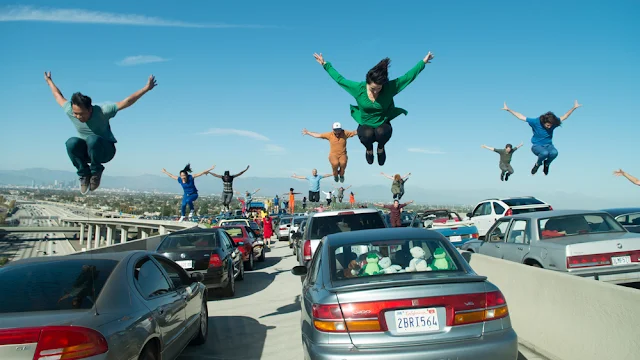 |
| Cristin Milioti and Andy Samberg in Palm Springs |
Maybe it was John Keats who invented the now-familiar trope of the "time loop." The figures on the Grecian urn celebrated in his ode seem to be stuck in one: The lovers "cannot fade," but will be "For ever panting, and for ever young." Of course, they don't know that; only the observer of the figures does, and the fact teases him "out of thought, / As doth eternity." And it was Shakespeare who noted that "our little life is rounded with a sleep," just as the day of the characters in Palm Springs is. The concept of the time loop, as established for most moviegoers by Harold Ramis's great 1993 movie Groundhog Day, is that it actually exists only for an observer who happens to be caught in it, as Bill Murray's character was in the film. The task of this observer is either to persuade others to recognize his plight or to find a way out of it. In the 1992 episode of Star Trek: The Next Generation called "Cause and Effect," written by Brannon Braga, the crew of the Enterprise is caught in a time loop that ends with the destruction of the ship and the crew, but everyone on board begins to have feelings of déjà vu as the event repeats itself; they eventually figure out a way to end it. Andy Siara's screenplay for Palm Springs takes a direction more in line with Groundhog Day by having three people aware of the loop: the wedding guests Nyles (Andy Samberg) and Sarah (Cristin Milioti) and the enraged Roy (J.K. Simmons), who blames Nyles for getting him caught in it. Eventually, Nyles and Roy give up and decide to seize the moment and endure an eternity of a single repeated day, but Sarah spends her time learning quantum physics to break the loop. Palm Springs doesn't break any new ground for the time loop trope, but it's engagingly conceived and entertainingly played, and it occasionally teases us out of thought about eternity, too.
